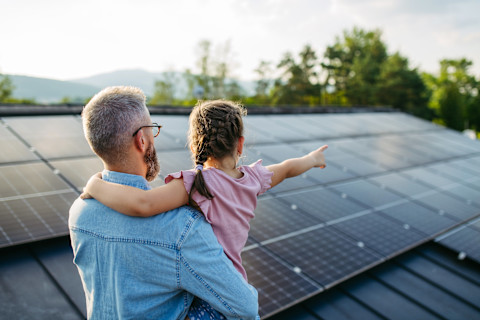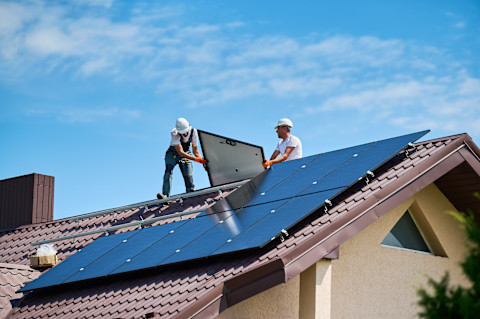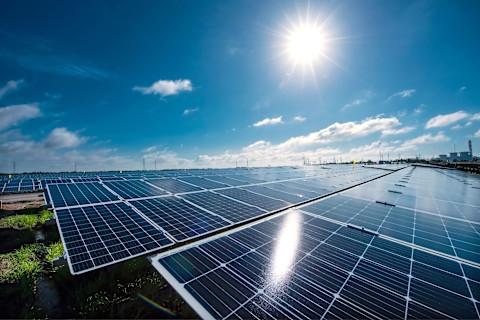Where to Find the Best PV Solar Panels
Updated on

PV Solar Panel Guide
Throughout the article, we'll highlight considerations such as efficiency, cost, durability, and warranty, which are crucial for making an informed decision when investing in your new solar tech.
In this article, we will cover the following topics:
- What Makes PV Solar Panels Worth it?
- Best PV Solar Panels Comparison Chart
- How to Get the Best Value Solar Panels
- How are PV Solar Panels Installed?
- The Future Trends of Solar PV Panels
- Find Local PV Solar Panel Installers on HomeStars
- FAQs Common Questions
What Makes PV Solar Panels Worth it?
What are PV solar panels? Solar photovoltaic (PV) panels turn sunlight into electricity. They are made of many small cells that create an electric current when sunlight hits them. The electricity they produce powers your home, can be sold back to the grid, or can even be stored for later use.
Recent technological advancements have significantly improved the performance of PV panels, making them more reliable and effective.
The benefits of new PV solar panels are:
- Bifacial panels that capture sunlight from both sides, enhancing power generation.
- PERC technology which increases efficiency by improving light capture and electron flow.
- Half-cut cell technology that reduces resistive losses, boosting overall efficiency.
These combined benefits make solar PV panels a smart and sustainable investment.
If you want to know how efficient your home is for energy before you decide to get solar panels, you can find a guide on energy audit costs here.
Best PV Solar Panels Comparison Chart

Selecting the right solar photovoltaic (PV) panels is very important.
For homeowners like you, modules that are compact yet efficient, durable, and cost-effective are often the best choice. The following PV modules are highly recommended based on their performance and reliability:
- LG NeON R: Known for high efficiency and aesthetic appeal.
- SunPower Maxeon: Offers exceptional durability and energy output.
- Canadian Solar HiKu: Reliable performance combined with affordability.
If you are feeling undecided or confused about what solar panels you want to go for, it may benefit you to talk to a professional. It’s easy to do this in just a few clicks on Homestars. Simply post your job, and a professional in your local area will get back in touch.
How to Get the Best Value Solar Panels
Selecting the best solar PV panel for your needs can seem daunting, but focusing on a few key criteria simplifies the process.
Consider factors such as your local climate, budget, and energy goals when making a decision. Climate considerations play a major role, as some panels perform better under specific weather conditions.
Your budget will also guide your choice, balancing between initial costs and long-term savings. Finally, clear energy goals help in determining panel efficiency and size requirements.
Here’s what you should think about before buying PV solar panels:
- Assess your available roof space to ensure optimal panel size selection.
- Research warranty offerings, as longer warranties often indicate greater product reliability.
- Compare the per-watt cost of panels to identify the best value within your budget.
- Consult with local solar experts to understand which panels perform best in your regional climate.
- Evaluate customer reviews and case studies so you get an idea of real-world performance and satisfaction.
HomeStars Tip: Always compare at least three different brands or models before making a decision, as this can provide a more comprehensive understanding of options available in the market.
If you want to know more about how much solar panels cost, you can find a full guide here. Or, if you want to explore cheaper options, you can look at this solar water heater guide.
How are PV Solar Panels Installed?

Once you’ve bought your new solar panels, the installer visits your home to inspect your roof. They check the roof’s condition, size, and how much sunlight it gets. Based on this, they design a solar system tailored to your energy needs and the space available.
Here are the steps to installing new PV solar panels:
Set up scaffolding: Before anything else, scaffolding is erected around your roof. This ensures safety for the installers and access to all needed areas. This step usually takes the longest, about a full day.
Install mounting system: Next, the installer lifts some roof tiles and securely attaches anchor points to the rafters underneath your roof. These anchors hold the mounting rails, which form the stable framework that will support the solar panels at the right angle for optimal sunlight.
Mount the solar panels: The solar panels are carefully placed onto the mounting rails. The installer adjusts the angle to maximize sun exposure before tightening all bolts to secure the panels firmly in place.
Wire the panels: Once installed, the panels are wired together in series or parallel, depending on the design. Electrical safety is key, so this step is usually done by a professional electrician with the home’s power switched off.
Install inverter: The inverter, which converts the solar panels’ direct current (DC) into the alternating current (AC) your home uses, is installed next. It is usually placed in a cool, shaded spot such as a garage or utility room.
Connect to electrical system: The inverter is connected to your home’s electrical system, often via a meter that tracks solar energy generation and an isolator switch for safety.
System testing and commissioning: Finally, installers run safety and performance tests to ensure the system works properly. When all checks are finished, your solar panels are switched on and start generating clean electricity.
HomeStars-Tip: The entire process usually takes a few weeks to a couple of months, depending on your location and system size, so it’s good to plan around this. If you want to find out more, you can talk to a nearby solar panel installation service on HomeStars today.
The Future Trends of Solar PV Panels
As demand for renewable energy grows, solar PV technology is advancing quickly. New innovations like bifacial panels capture sunlight from both sides, producing up to 30% more electricity.
Thin-film panels are lightweight and flexible, making solar power easier to install in more places. These developments boost efficiency and make solar energy adaptable and accessible for a variety of environments.
Key trends to watch in solar PV technology include:
- Bifacial Solar Modules: Expected to become more mainstream, enabling higher energy output.
- Perovskite Solar Cells: Known for their potential high efficiency and low production costs.
- Smart Solar Technology: Integration of AI and IoT for improved performance and energy management.
- Energy Storage: Advancements in battery technology to store excess energy generated.
HomeStars Tip: Consider consulting with local solar panel companies to understand how future technologies can benefit your specific energy needs and project goals.
Find Local PV Solar Panel Installers on HomeStars
Struggling to find the right solar panels or unsure how to maintain them? It’s easy to connect with trusted local solar experts who can guide you from choosing the best panels to keeping them clean and efficient. It’s easy to post your job on HomeStars today and get in touch with professionals ready to help you out.
FAQ: Common Questions Readers Ask About Solar PV Panels
What makes a solar PV panel the best choice for home use?
A solar PV panel is considered the best choice for home use when it combines high efficiency, durability, and cost-effectiveness. Key features to look for in PV panels include a high energy conversion rate, which allows the panel to convert more sunlight into electricity; robust construction materials that withstand various weather conditions; and a warranty period that assures longevity and performance over many years.
How can I determine the efficiency of different solar PV panels?
The efficiency of different solar PV panels can be determined by their efficiency rating, often provided by the manufacturer. This rating indicates the percentage of sunlight the panel can convert into usable electricity under standard test conditions.
How does the cost of highly efficient PV panels compare to standard models?
The cost of highly efficient PV panels is generally higher than standard models due to advanced materials and technology that increase their efficiency and durability. While upfront costs are greater, these panels often offer more significant long-term savings through higher energy output and lower energy bills. The initial investment can frequently be offset over time with incentives, rebates, or an accelerated return on investment thanks to increased energy production.
Discuss your job with pros so they can accurately estimate the cost.